Champagne And Caviar: A Great Culinary Combination Or Just One Excess On Top Of Another?
by Ken Gargett
Like almost the entire world, I have been truly horrified by what is happening with the Russian invasion of Ukraine. At the time of writing, the Russians are attempting to forge ahead but meeting strong resistance. Personally, this seems even more poignant as I had the opportunity to visit Ukraine and Kyiv what seems a lifetime ago and I remember a beautiful city and lovely people, even if at the time it was still part of the USSR and under the heel of Russian jackboots.
I was studying in London at the time and a friend from the United States doing her masters in war studies organized for a group of us to visit the USSR for ten days. Talk about a different world. This was still the days of the Cold War and the Iron Curtain. On another occasion she and I also visited the infamous Checkpoint Charlie, the gateway to East Berlin. A bleaker and more depressing place at the time was hard to envisage.
After returning from the USSR, and remembering that this was an era in which internet and mobile phones had not yet been invented and all news was consumed from TV or newspapers, I had locked myself away to catch up on overdue studies. Suddenly I started getting frantic calls and messages from home to see if I was all right and whether I was affected by the nuclear explosion. I had no idea what anyone was talking about until I read about Chernobyl. We had been very close to the town – Kyiv is only about 100 kilometers away – just a week before the catastrophe, but fortunately we were back in London when it occurred. Just. Others were not so fortunate.
It really has been tough going for Ukrainians for the last century.
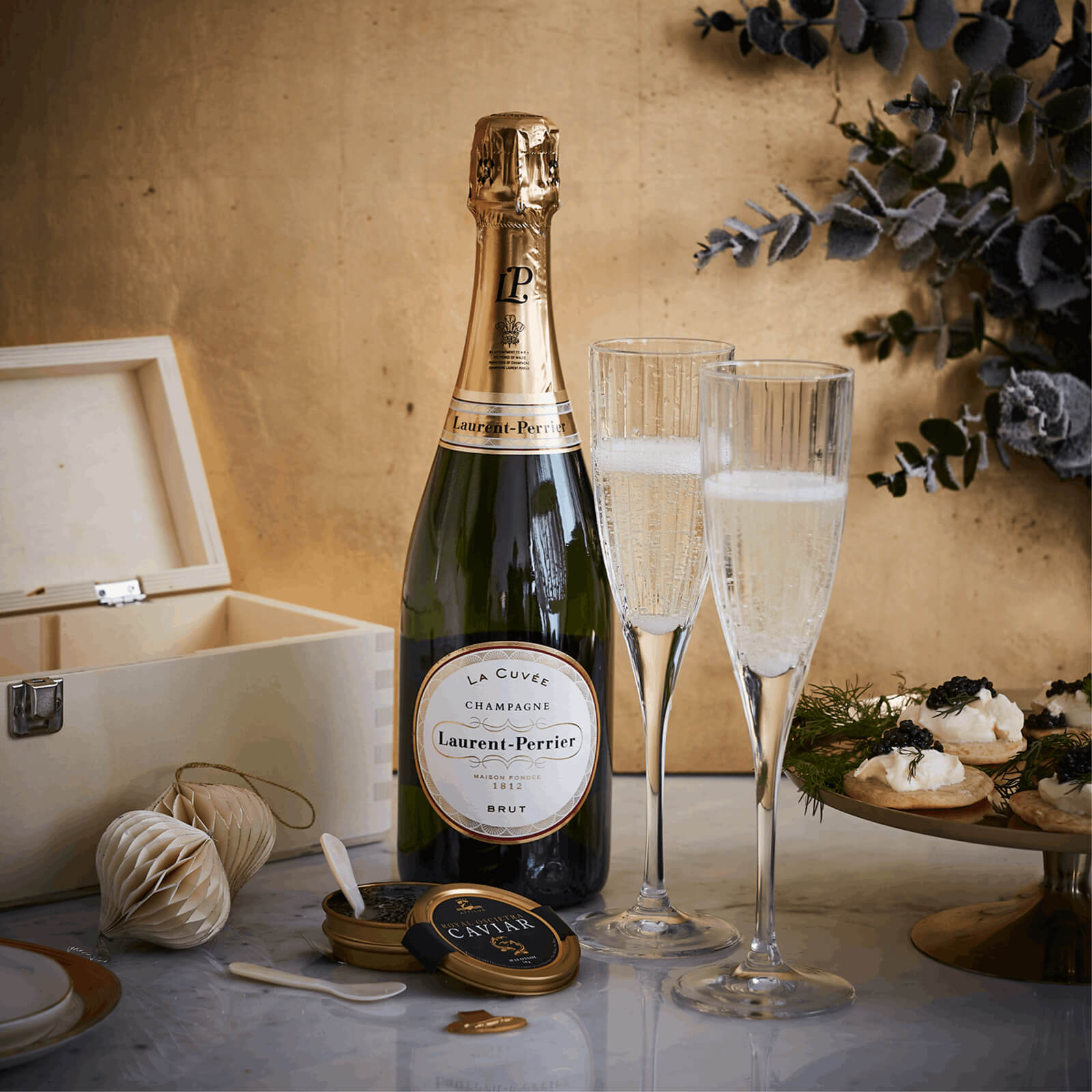
Champagne and caviar box set (photo courtesy www.fodabox.com)
Caviar
One of the many things I remember about that trip (which included a run-in with the KGB, a story for another time) was the caviar. I realize that some may find an article on one of the world’s luxuries at this time to be inappropriate, but these days is there any time that is appropriate? And it would have given me the opportunity to urge caviar lovers to boycott Russian production and turn elsewhere, but fishing in the Caspian Sea has been banned as a result of overfishing since earlier this century. I understand that efforts have been made to develop sustainable aquaculture in an attempt to offer caviar in a more responsible manner (usually something to be applauded), but at the moment perhaps we should boycott that as well if sourced from Russia.
In those days, tourists to the USSR could access the black market to change money, making everything much, much cheaper. Not strictly legal but the way of the world at the time. It meant that caviar, already vastly less expensive in Moscow than in London and elsewhere, became ridiculously cheap. It was widely available. I recall one restaurant where we asked the waitress to bring a couple of us a large bowl. We had to send the poor lady back about six times as she simply could not believe anyone would order so much – we were all too aware that as soon as we got on the plane back to England, the tap would be turned off. To be fair, the 1980s really was the decade of excess. These days, it is a very rare treat indeed.
So, is caviar all it is made out to be or simply fish eggs? One of the world’s greatest delicacies or misshapen bait? And even more importantly, is champagne and caviar the great culinary combination or just one excess on top of another?
Few question whether or not this magical marriage is the great match we have been told. I can understand that if you are sitting on a frozen riverbank in several feet of snow, perhaps a bottle of vodka makes sense with your fish eggs, but otherwise crack open the bubbly.
Not all agree. One of my favorite wine and food matching books is Red Wine and Fish by David Rosengarten and Joshua Wesson. Written in 1989 but still available at Amazon – which gives you an idea of its lasting impact as, after all, these things don’t date – the authors suggest vodka or, if you must, a light, very dry champagne. They believe, with some justification, that the champagne/caviar match is an economic one, not gustatory logic. Rosengarten later went further, suggesting the best match was beer. Good luck with that catching on.
We have looked at champagnes many times here at Quill & Pad, but never caviar. Time that was rectified.
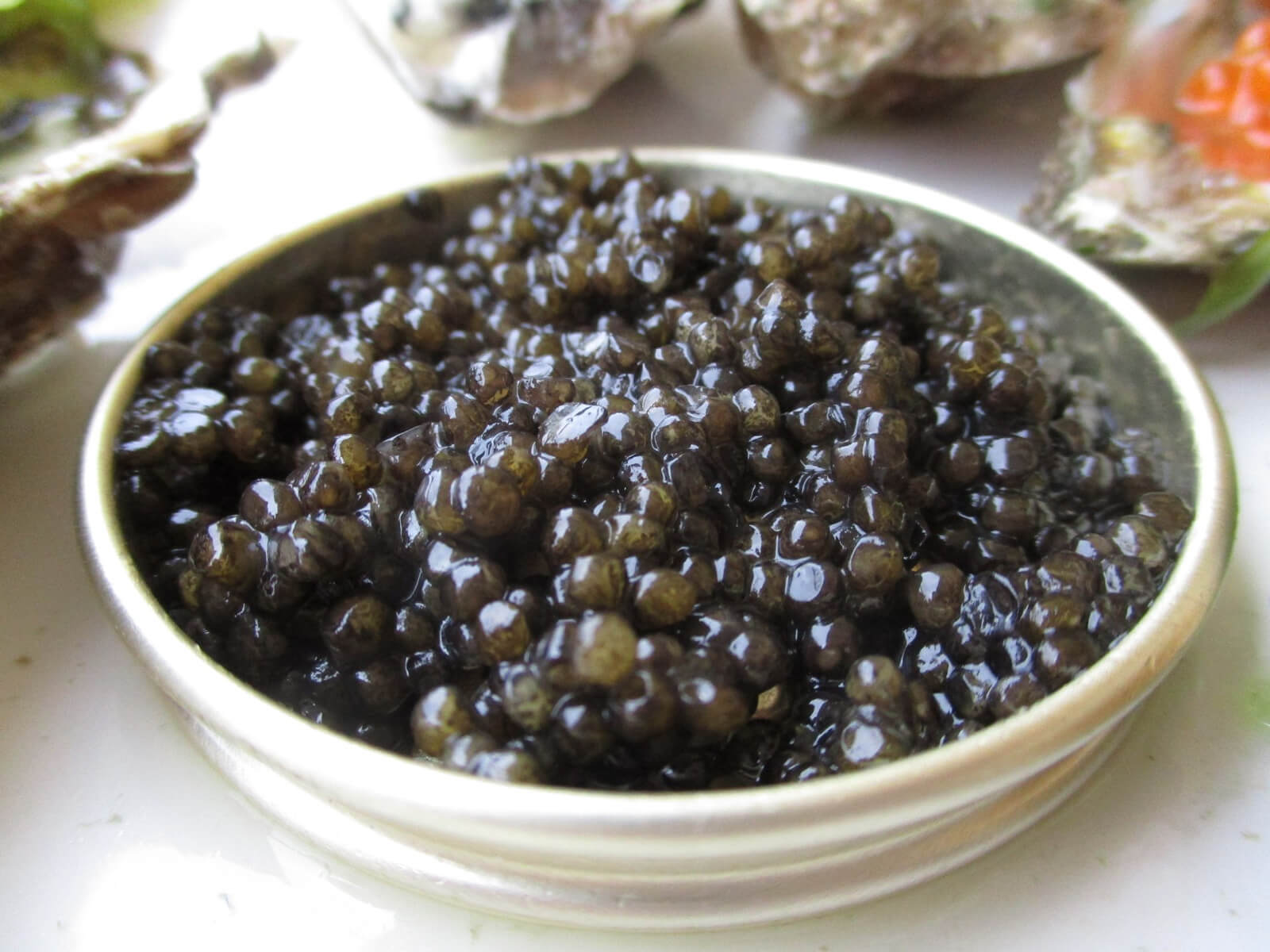
Beluga caviar (photo courtesy Arnaud-25/Wikipedia Commons)
Caviar is basically fish roe, eggs if you prefer, and for our purposes from a sturgeon (which should always be the case but sometimes the name is co-opted for other fish eggs). Salmon, trout, carp, lumpfish, and whitebait all supposedly produce “caviar.”
The most famous is Beluga caviar, but these days it is not only absurdly expensive but so rare that if you encounter any, the odds are extremely strong that you have a “fake.” Beluga sturgeon grow to immense sizes – over ten meters long (30 feet) and weighing in excess of a tonne was not uncommon – but have almost been fished to extinction. It is likely that they have passed the point of no return.
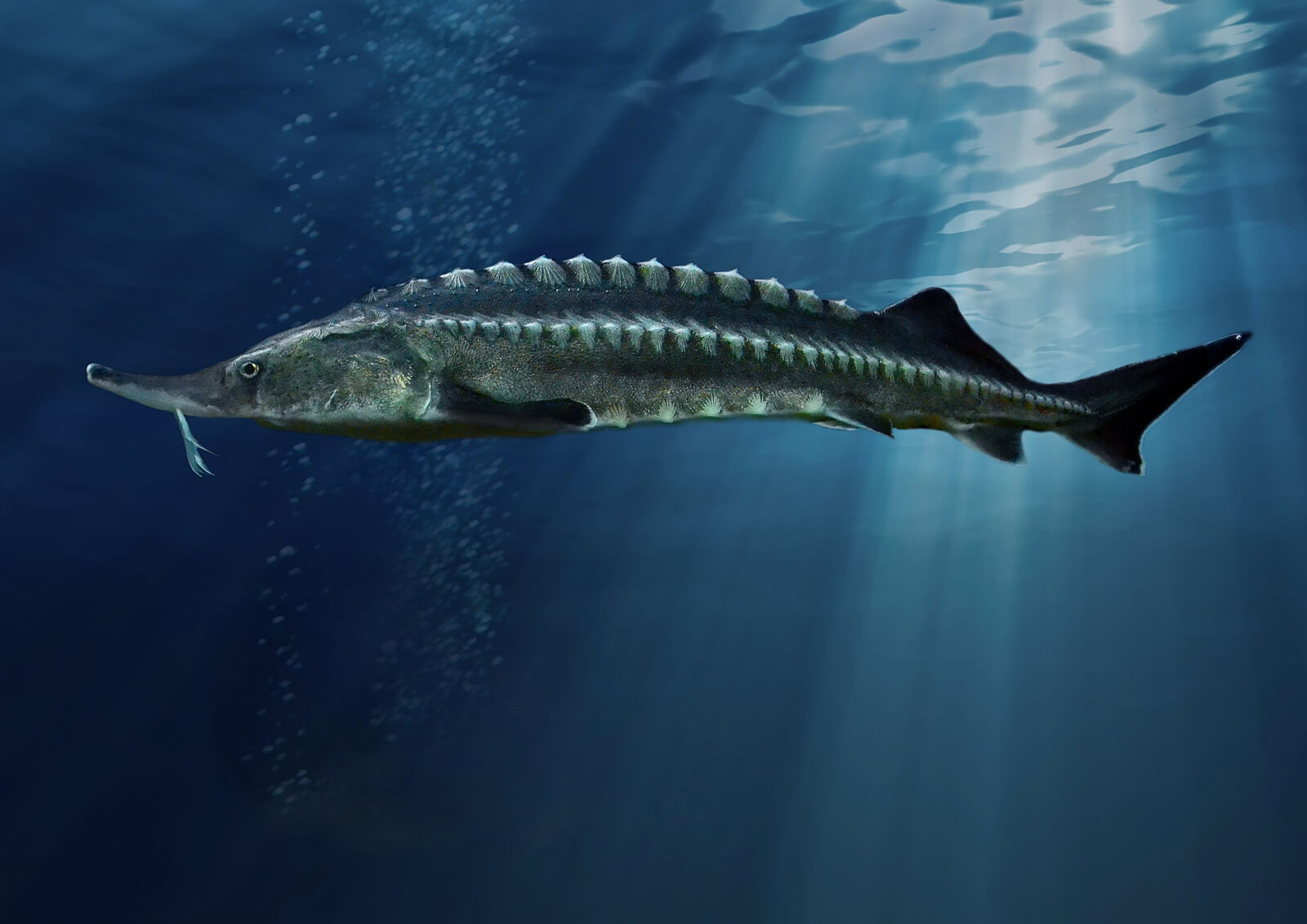
Beluga sturgeon (photo courtesy Максим Яковлєв/Wikipedia Commons)
We also have Ossetra and Sevruga caviar (there are other species of sturgeon that also provide caviar but this trio is largely the holy trinity of fish eggs). Traditionally, these come from either the Caspian Sea or the Black Sea, though these days other sources have stepped up.
Ossetra (sometimes osietra) offers a more nutty and concentrated taste. The fish grows to around three meters and is found in deeper waters. Sevruga comes from the smallest sturgeon and is known for its intensity and aromatics. It is claimed that around the turn of the previous century, Sevruga was the most highly prized and expensive of the caviars. The Russians were faced with a vast oversupply of Beluga at the time and so came up with a rather risky scheme whereby they tripled the price of Beluga in an attempt to create an elite market. It worked and this is allegedly why Beluga is, even today, the most expensive form of caviar.
Sturgeon was once plentiful throughout Europe. The 1960 edition of Larousse Gastronomic refers to the fish as present in the Gironde. Overfishing, poaching, and pollution have decimated them.
The collapse of the USSR saw many suppliers turn to Iran as a source. Today, Iran produces around 10 percent of the world’s caviar. Much these days is farmed, and some is even extracted by massage rather than the killing of the fish.
The largest producer comes as a surprise: China produces 60 percent of the world’s supply. Chinese producer Kaluga Queen cultivates sturgeon at Qiandao Lake in Zhejiang. Other producing countries include Italy, Israel, Madagascar, Bulgaria, France, Malaysia (marketed as “tropical caviar”), Moldova, the U.S., Canada, Spain, Finland, and Uruguay. Even the United Arab Emirates has sturgeon farms. There are farms all over the world.
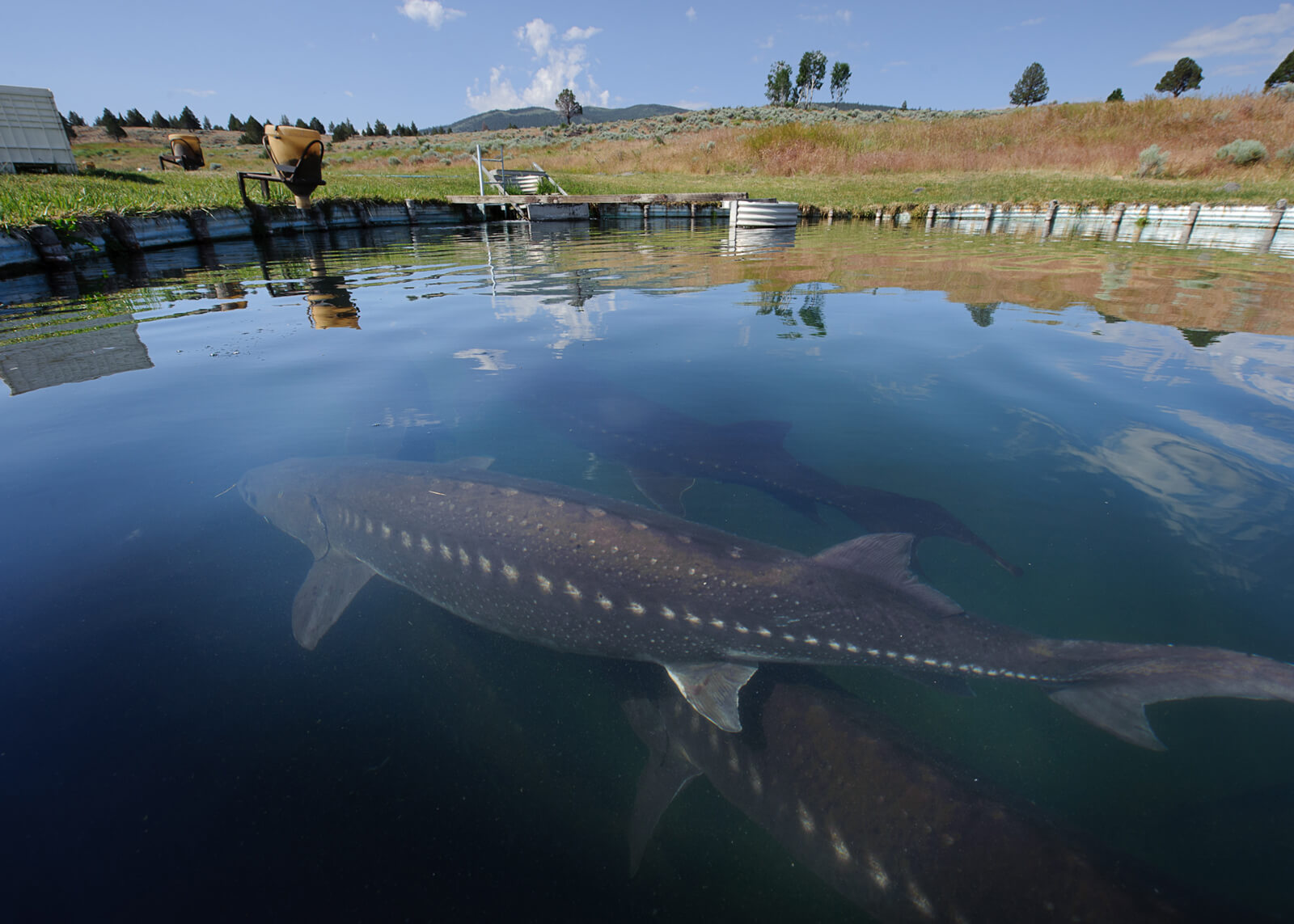
White sturgeon farming in California (photo courtesy USDA-NRCS-CA/Wikipedia Commons)
Does origin matter? Is it as important as, say, the terroir of a wine? After all, nowhere can match the Champagne region for elite sparkling wines. What about caviar? A member of the Petrossian family, one of the world’s most famous suppliers, had an interesting take. “You buy a diamond because of its beauty, not the country where it was mined.”
Production was suffering badly with the reduction of sturgeon in traditional fishing areas. Armen Petrossian has been quoted as saying that in 1998 world production was just 500 kilograms. By 2015, that had risen thanks to the sturgeon farms around the world to 130 tonnes.
In Great Britain, sturgeon was deemed a “royal fish” by Edward II back in 1324, meaning any sturgeon found within the foreshores of the UK was considered the property of the reigning monarch.
After harvesting, the roe will either be non-pasteurized, referred to as fresh, or pasteurized, which tends to reduce the price.
Historically, caviar and sturgeon were traded to the Greeks as far back as the tenth century, coming from the Sea of Azov (the little offshoot at the north of the Black Sea).
Beluga caviar is larger than most, soft and ranging in color from pale to black. Ossetra is seen as closest to Beluga for quality, with mid-sized eggs that tend to be more brown than grey. Sevruga is smaller and darker.
We are seeing hybrid caviars as well, which, according to the House of Caviar blog, is a “hybrid variety that combines Huso and Acipenser Baerii sturgeon that have been treated by Caspian salt masters.” The Huso is Beluga while the Acipenser Baerii is also known as the Siberian sturgeon. Farmed in a sustainable manner, crossbreeding results in a faster growing fish, maturing more quickly. Usually, it takes a sturgeon ten years to reach the stage of producing caviar, so this is good for profitability. The result is seen as butterier than Beluga.
The Kaluga sturgeon is closely related to the Beluga and often also used as part of the hybrid program. Chinese Kaluga is now also highly prized.
Prices and different types? Endless, as the websites for Petrossian or the aforementioned House of Caviar, two highly respected caviar suppliers, show.
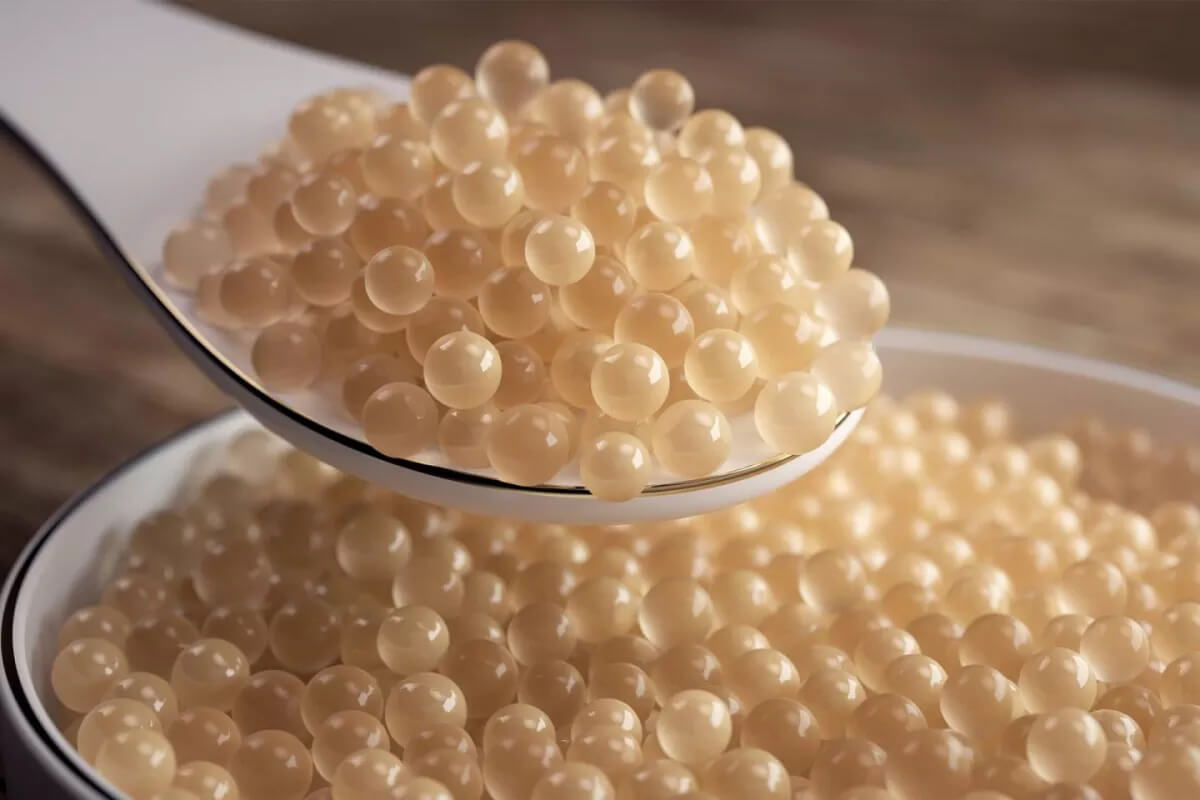
White caviar (photo courtesy www.finedininglovers.fr)
In the past, a kilogram of caviar from Iran has gone as high as £20,000. Even that is left in the dust by “white gold caviar,” also known as Strottarga Bianco caviar. It comes from the Siberian Albino sturgeon so is incredibly rare, and during production has a layer of 22-karat gold leaf added – because too much excess is never enough! It comes from fish raised on a small farm in Austria (as noted, it takes a decade for the fish to mature) and was recently priced at €100,000/$113,630 for a kilogram.
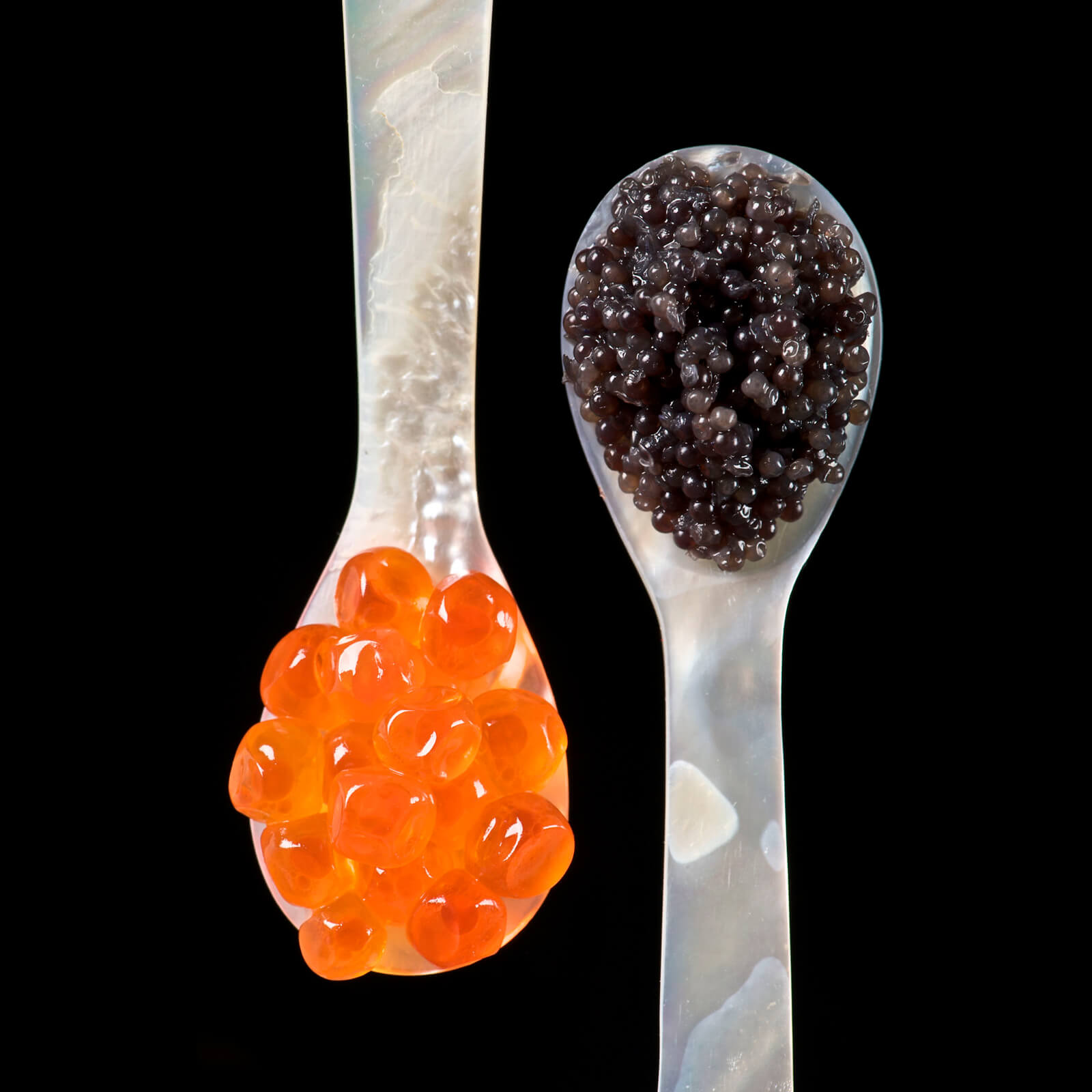
Salmon roe (left) and sturgeon caviar on mother-of-pearl caviar spoons (photo courtesy THOR/Wikipedia Commons)
Whatever you choose, mother-of-pearl spoons are a way of ensuring no corruption of the taste.
Matching caviar with champagne
The House of Caviar suggests that with your Beluga Hybrid try purple potato chips and crème fraiche. To me the bubbles – or even beer – sounds like a better option.
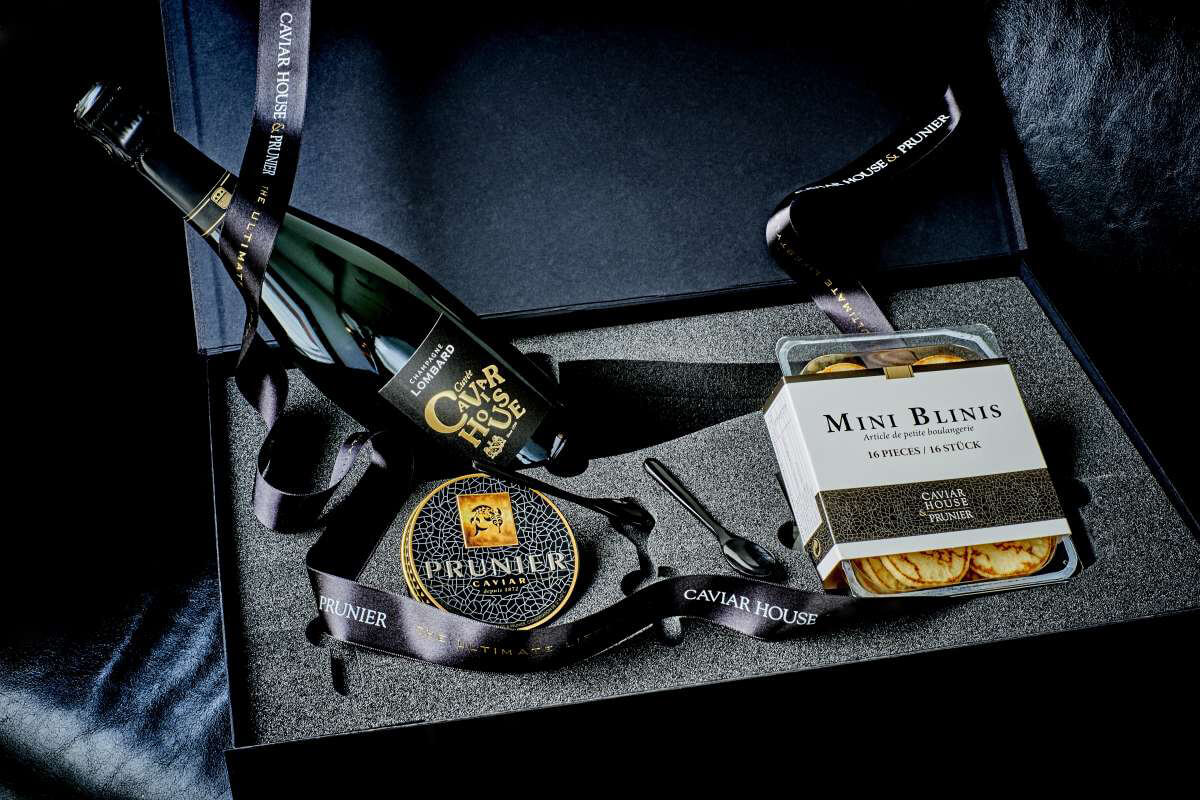
Caviar and champagne box set (photo courtesy Caviar House)
Dry champagne tends to be an ideal match because of the oil, salt, and fat found in caviar. This enables the champagne to cleanse and refresh the palate. And the drier the better. Avoid sweeter champagnes. Avoid anything sweet.
Krug is often touted as the perfect match. Whether this is because caviar is seen as the ultimate luxury food, while Krug holds a similar position for many in the world of wine and therefore the two are linked, or because it is simply true is an exercise worth pursuing. As ever, personal preference is crucial.
Meander through the various opinions and you’ll soon see that most of the great champagnes get a mention: Billecart-Salmon Blanc de Blancs, Veuve Clicquot Grande Dame, Dom Pérignon, Taittinger’s Comte de Champagne, so many more. Others love the idea of a top rosé champagne.
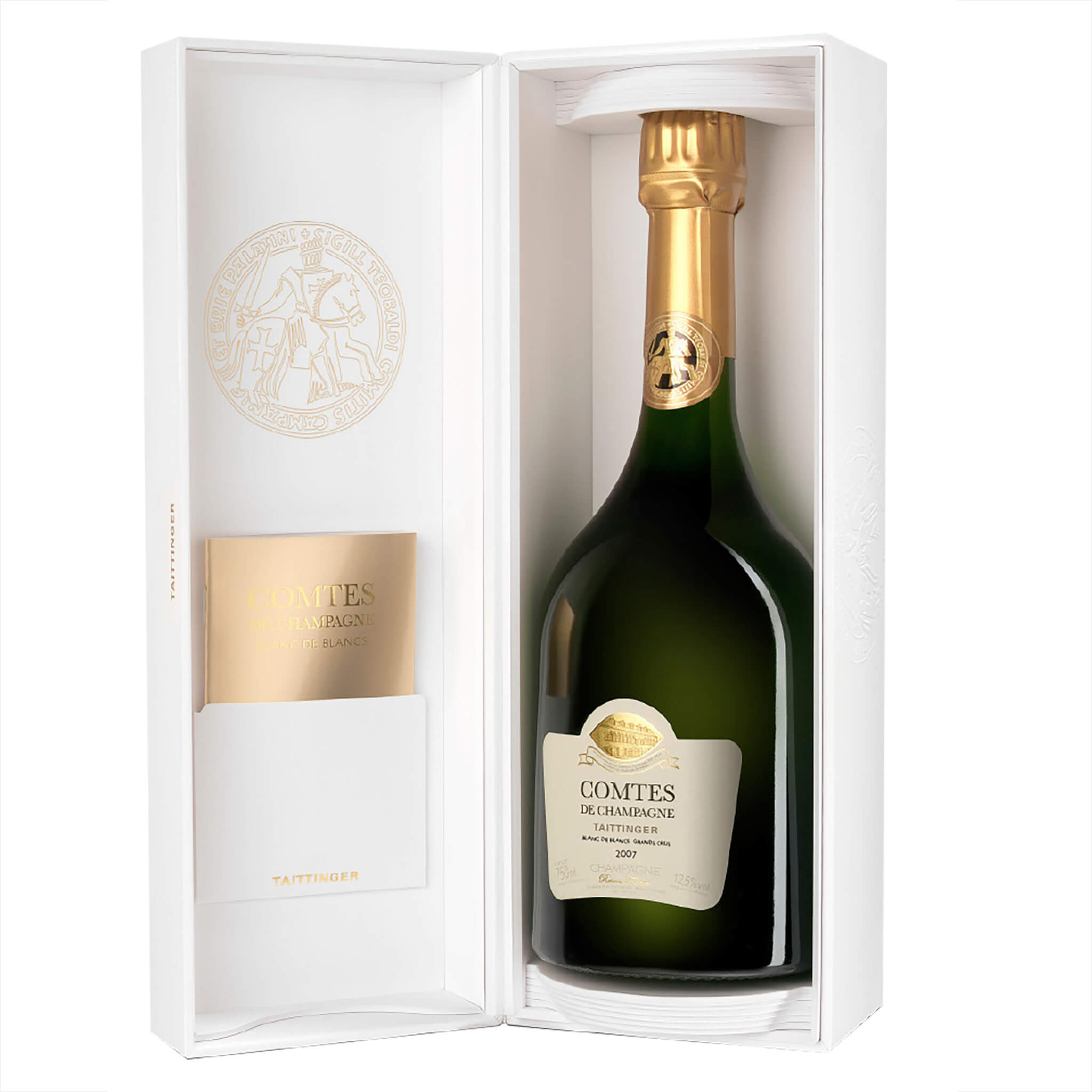
Taittinger Comtes de Champagne 2007
Many years ago, I headed to France for my first visit to Champagne. At the time, I was still a full-time lawyer and doing a little writing on the side because I loved it. As I had a day or two in Paris, I thought that as well as champagne I’d try and find out a little about other delicacies. So I wrote (pre-internet days) to both a leading Parisian caviar supplier and a truffle supplier. Both kindly wrote back inviting me to visit. By the most extraordinary coincidence, Caviar Kaspia and Maison de la Truffe are literally next to each other at Place de la Madeleine (almost right on top of where Emile Zola supposedly wrote ”j‘accuse” in 1898).
Jean-Pierre Dugoujon, the director general of Caviar Kaspia (formerly of Maxim’s during its glory days), told me he found Bollinger a little too strong for caviar. At the time, his two favorite combinations were the 1982 Louis Roederer Cristal and the 1985 Taittinger Comte de Champagne. The trick to a great match was to select a champagne that avoids the appearance of a harsh or “fishy” finish to it when working with the caviar. Dugoujon felt that caviar also accentuated any sweetness in the wine, so dry is better.
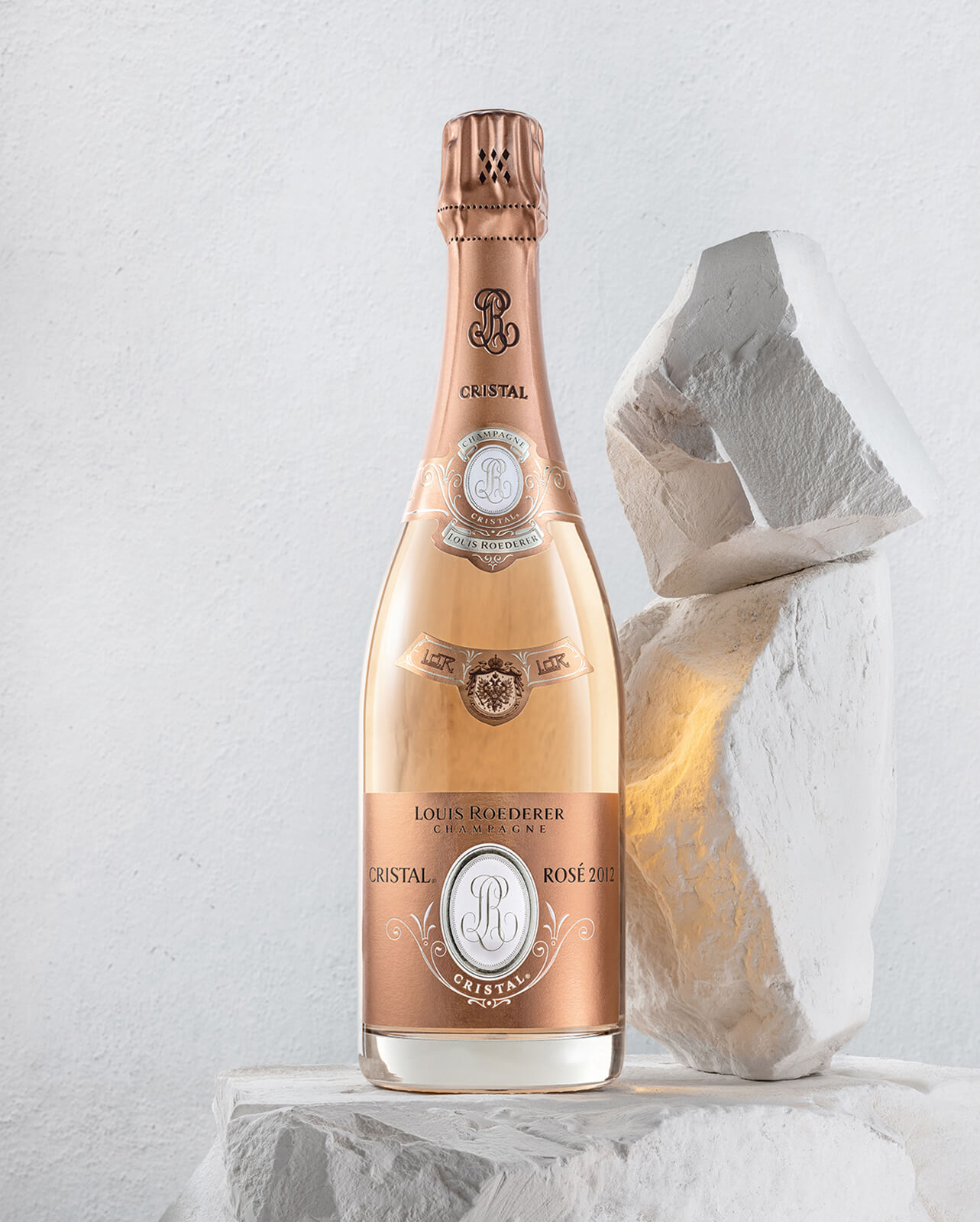
Louis Roederer Cristal Rosé 2012 (photo courtesy Louis Roederer/Emmanuel Allaire)
We did a range of tastings and for me it was the Osietra that best matched champagne. The saltiness found with the Sevruga was a little much for a truly harmonious match (perhaps beer not the worst idea?). The intensity of the Osietra gave it the nod over the Beluga (those were the days!).
Other concepts that emerged were to avoid young and fruity champagnes. The nutty, toasty characters that can develop with age in a champagne were a match made in heaven for the nuttiness of the Osietra. High acid/non-malolactic champagnes were better able to handle the fishiness of the caviar. With climate change, one suspects that we might see more and more champagnes not undergoing malolactic fermentation. The trend of lower dosages also suits combining with caviar. The use of Pinot Noir in rosé champagnes is another plus. Some take this a touch further and opt for Blanc de Noirs.
Aside from beer and vodka, there are other options to try with caviar. Some recommend Sauvignon Blanc, which strikes me as a travesty against humanity. White Burgundy? A top-level offering would make an excellent match. Pinot Gris is a better option than Sauvignon Blanc but that is hardly overwhelming praise. Fino sherry is an interesting choice. Some simply choose water to ensure nothing interferes with the taste of the caviar. Understandable, but it does seem like a missed opportunity.
In the end, it always comes back to champagne. It is probably no surprise that the champagnes most often recommended are Louis Roederer’s Cristal, Krug, Dom Pérignon, and Taittinger’s Comte.
Finally, I would be negligent in not mentioning perhaps the most famous exponent of enjoying caviar and champagne, James Bond himself. Naturally, Bond preferred Beluga and he enjoys it in a number of the books (Thunderball for example) and films (On Her Majesty’s Secret Service, A View to a Kill, The World is not Enough – where he ends up in Valentin Zukovsky’s caviar factory and ruins large quantities of Beluga – and Casino Royale). He is also known to enjoy vodka with his Beluga.
In the film Thunderball, Bond enjoys his Beluga with Dom Pérignon. In the book of the same name, he opted for Veuve Clicquot Rosé and $50 worth of Beluga, telling Bond Girl du jour, Domino, “Anything less would be no more than a spoonful.”
In Daniel Craig’s first outing, Casino Royale, Bond orders “champagne and Beluga for one” while at the club in the Bahamas (the champagne was Bollinger) and left this bounty for Solenge before heading off to save the world. It proved her last meal. There are worse ways to go.
* This article was first published 08 April 2022 at Champagne And Caviar: A Great Culinary Combination Or Just One Excess On Top Of Another?
You may also enjoy:
Taittinger Comtes De Champagne Blanc Des Blancs 2008: James Bond Will Like It
Dom Pérignon 2008: From The Monk’s Earliest Beginnings To The Most Glorious Champagne Vintage



Leave a Reply
Want to join the discussion?Feel free to contribute!